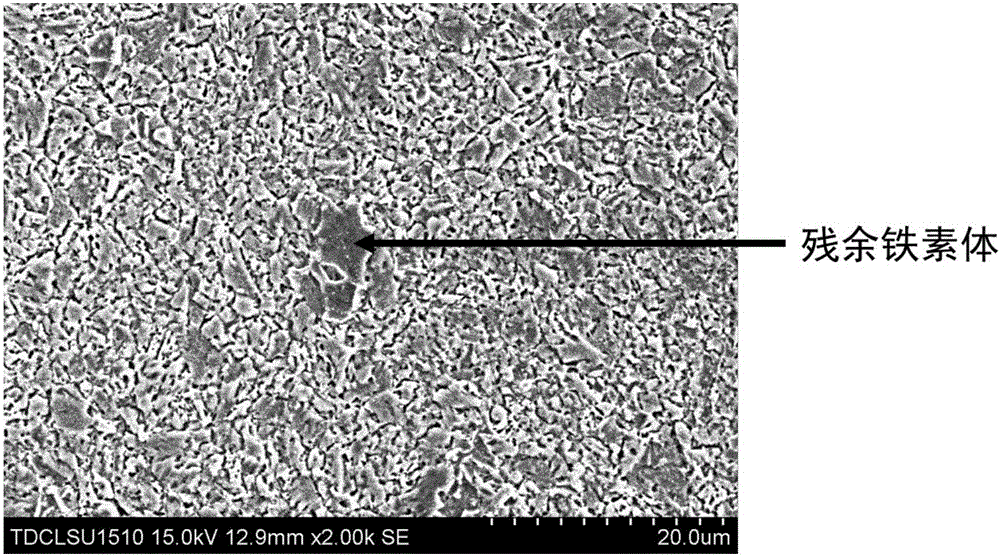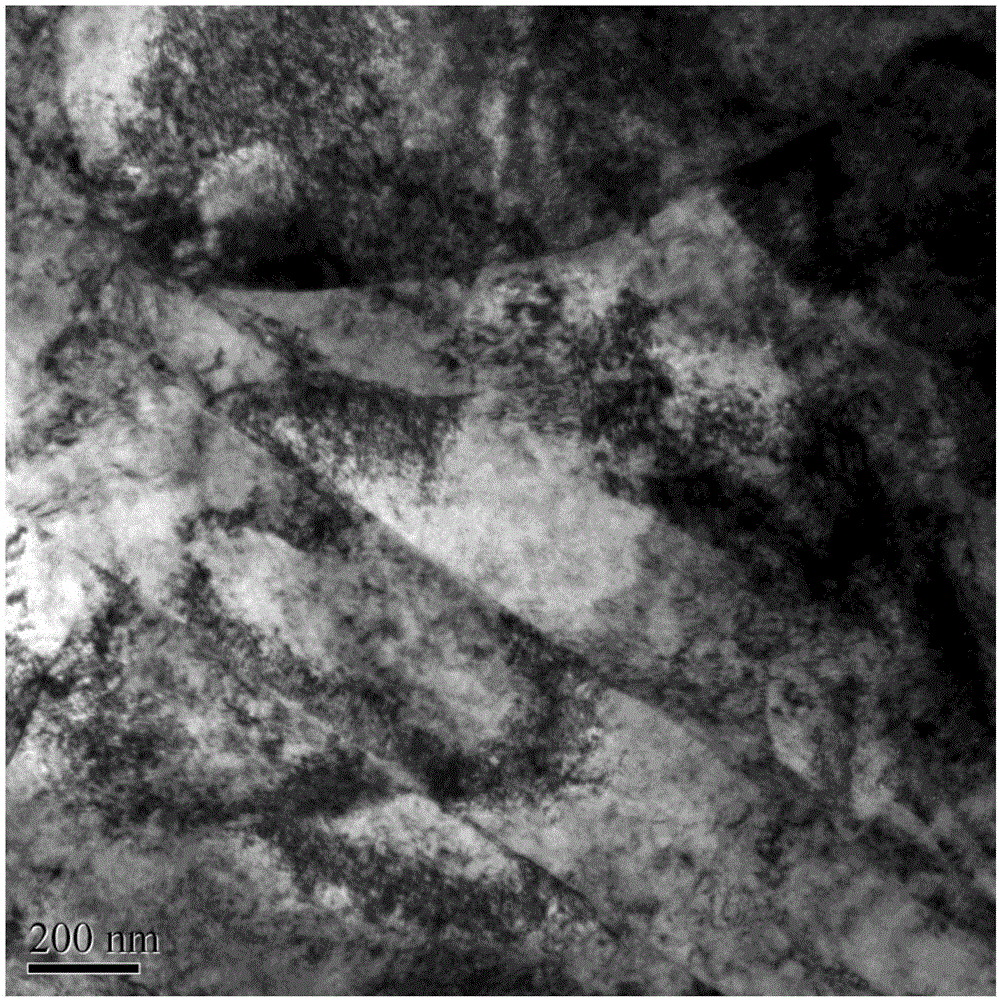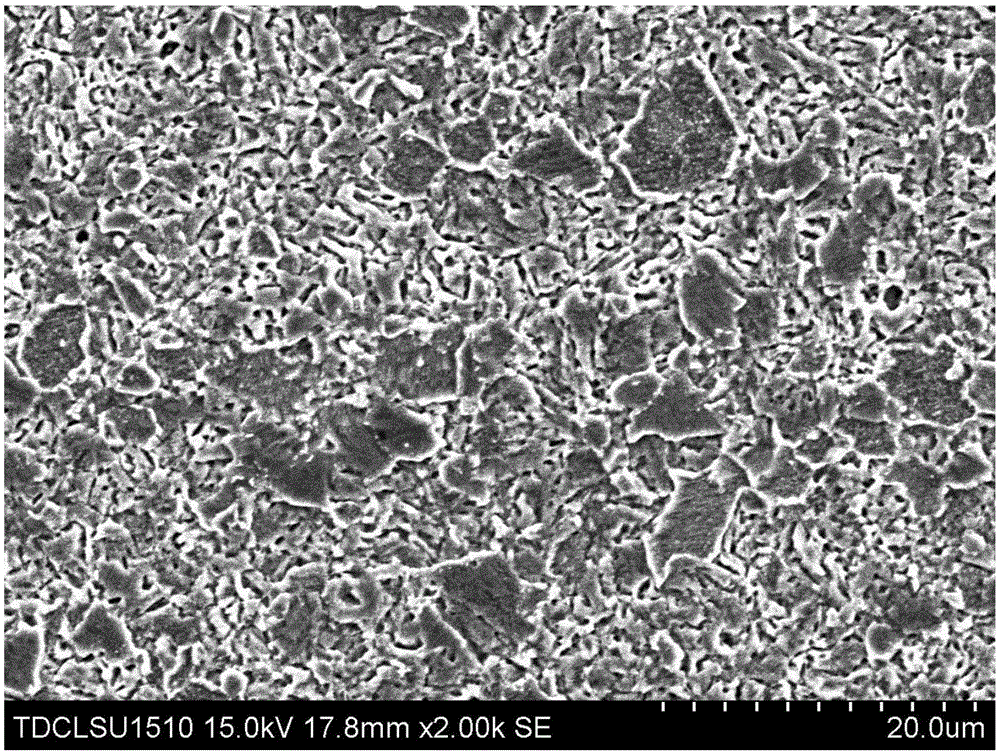Method for controlling residual ferrite and martensite slab structure in 9Cr-ODS steel
A lath structure and ferrite technology, applied in the direction of improving process efficiency, etc., to achieve the effect of improving creep life
- Summary
- Abstract
- Description
- Claims
- Application Information
AI Technical Summary
Problems solved by technology
Method used
Image
Examples
Embodiment 1
[0032] The composition of the pre-alloyed powder in Example 1 is shown in the table. The composition is Fe-9Cr-1.5W-0.2V-0.07Ta-0.1C (wt.%). Combine the prealloyed powder with Y 2 O 3 The powder is mixed according to the mass ratio of 99.65:0.35, and mechanically ball milled in a planetary ball mill with a ball-to-material ratio of 15:1, a ball milling speed of 400r / min, and a ball milling time of 45h under argon protection; After adding an appropriate amount of ball mill powder, put it into a spark plasma sintering furnace for solidification and molding, raise the temperature to 800°C at a heating rate of 100°C / min, keep it for 5 minutes, then raise the temperature to 1100°C at the same rate, keep it for 10 minutes, and the sintering pressure is 40MP, cooled to room temperature with the furnace.
[0033] Subsequent heat treatment was carried out on the 9Cr-ODS martensitic steel obtained by sintering. The temperature was raised to 1100 °C at a heating rate of 10 °C / min, kept...
Embodiment 2
[0036] The composition of the pre-alloyed powder in Example 2 is shown in the table. The composition is Fe-9Cr-1.5W-0.2V-0.07Ta-0.1C (wt.%). Combine the prealloyed powder with Y 2 O 3 The powder is mixed according to the mass ratio of 99.65:0.35, and mechanically ball milled in a planetary ball mill with a ball-to-material ratio of 15:1, a ball milling speed of 400r / min, and a ball milling time of 45h under argon protection; After adding an appropriate amount of ball mill powder, put it into a spark plasma sintering furnace for solidification and molding, raise the temperature to 800°C at a heating rate of 100°C / min, keep it for 5 minutes, then raise the temperature to 1100°C at the same rate, keep it for 10 minutes, and the sintering pressure is 40MP, cooled to room temperature with the furnace.
[0037] Subsequent heat treatment was carried out on the 9Cr-ODS martensitic steel obtained by sintering. The temperature was raised to 1100 °C at a heating rate of 20 °C / min, kept...
Embodiment 3
[0040] The composition of the pre-alloyed powder in Example 3 is shown in the table. The composition is Fe-9Cr-1.5W-0.2V-0.07Ta-0.1C (wt.%). Combine the prealloyed powder with Y 2 O 3 The powder is mixed according to the mass ratio of 99.65:0.35, and mechanically ball milled in a planetary ball mill with a ball-to-material ratio of 15:1, a ball milling speed of 400r / min, and a ball milling time of 45h under argon protection; After adding an appropriate amount of ball mill powder, put it into a spark plasma sintering furnace for solidification and molding, raise the temperature to 800°C at a heating rate of 100°C / min, keep it for 5 minutes, then raise the temperature to 1100°C at the same rate, keep it for 10 minutes, and the sintering pressure is 40MP, cooled to room temperature with the furnace.
[0041] Subsequent heat treatment was carried out on the 9Cr-ODS martensitic steel obtained by sintering. The temperature was raised to 1100 °C at a heating rate of 30 °C / min, kept...
PUM
| Property | Measurement | Unit |
|---|---|---|
| size | aaaaa | aaaaa |
Abstract
Description
Claims
Application Information
 Login to View More
Login to View More - R&D
- Intellectual Property
- Life Sciences
- Materials
- Tech Scout
- Unparalleled Data Quality
- Higher Quality Content
- 60% Fewer Hallucinations
Browse by: Latest US Patents, China's latest patents, Technical Efficacy Thesaurus, Application Domain, Technology Topic, Popular Technical Reports.
© 2025 PatSnap. All rights reserved.Legal|Privacy policy|Modern Slavery Act Transparency Statement|Sitemap|About US| Contact US: help@patsnap.com



